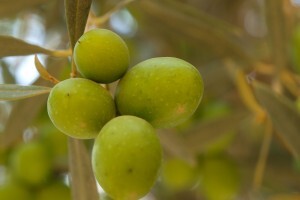-
Israel's Desert Agriculture
Desert agriculture in Israel is one of the country’s greatest successes, and something at which Israel leads the world. The Negev Desert which covers over 60% of the country has actually shrunk in size over the past century as agricultural activity has turned sand into green fields, the opposite to the desertification trend which much of the rest of the world is battling to prevent. Even in the depths of Israel’s Negev Desert are gems of agriculture amid the harsh, dry conditions, and relatively mineral-deprived sandy soil. Cherry tomatoes growing in the midst of the Negev Desert
Cherry tomatoes growing in the midst of the Negev Desert Israeli company Netafim invented modern drip irrigation technology in the 1960’s. This allowed the precious and scarce water resources of the desert to be used at extreme limits to grow crops. Among the most noteworthy crops grown in the Israeli desert are cherry tomatoes – the modern strain which are found in grocery stores around the world was developed in the Negev. The cherry tomatoes grown in the Negev are 2-3 times sweeter than those found elsewhere due to the amount of water used, and the unique qualities of minerals found in the water. Today, agriculturalists are developing even newer strains of the tomato to increase yields further (already the Negev grows 3-4 times greater yields of tomatoes compared to elsewhere in the world).
As well as cherry tomatoes, the Negev is home to fish farms, olive groves, plantations of many varieties of fruit and vegetable, and many more unusual crops which are selected based on their response to the desert conditions. In recent years, these include peppers, which, although not innately positively responding to the conditions of the Negev, taste far sweeter than those from elsewhere when grown in the region. Farmers in the Negev also trial growing unique and unusual crops such as the tomato tree which originates from South America and creates a unique citrus tasting fruit, and cherry tomatoes shaped like dates.
A unique agricultural research station in the Ramat Negev region is working together with the farmers from the region to develop strains of crops best suited to the Negev’s climate, water resources, and soil conditions, and test new techniques from growth. Visiting the visitors center and touring the center can be arranged for groups. Some weekends, and during holiday times, regular group tours run.
 Desert agriculture is fascinating
Desert agriculture is fascinatingIn the Judean Desert, near the Northern Dead Sea (the Megilot Region), more impressive desert agriculture is taking place. Here, farmers are able to make use of the minerals from the Dead Sea which can also be found in the soils and sands that lie on the ground which create especially strong-tasting crops including onions, and basil which is considered to be the best in the world, so much so, that even the Italians are importing it. The region has historically been a center for the growth of dates, and many of the dates found in grocery stores around the world come from here. In one particular farm, the date trees have been uniquely cultivated and are as a result, producing what is the earliest date crop in the world.
(SOURCE : https://www.touristisrael.com/israels-desert-agriculture/10334/)
